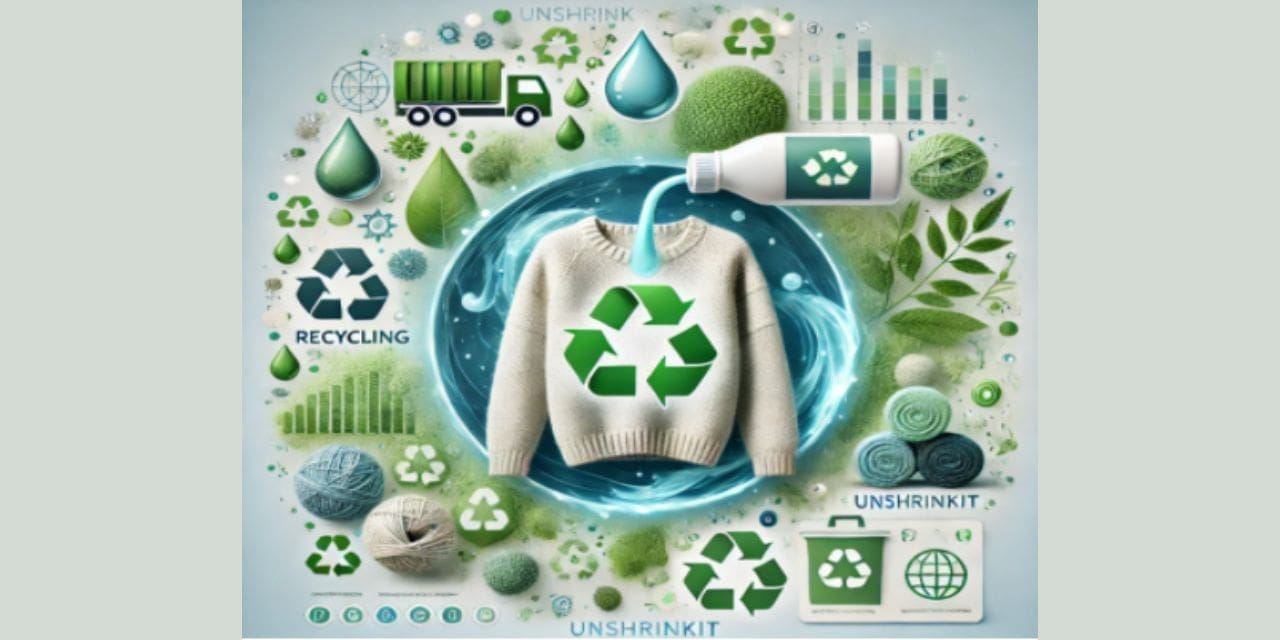In recent years, sustainability has become a driving force in numerous industries, and the textile sector is no exception. With increasing awareness of the environmental impact of fast fashion and textile waste, consumers and businesses alike are seeking sustainable alternatives. This shift has sparked innovations aimed at reducing waste, utilizing eco-friendly materials, and creating new products that extend the lifespan of textiles. One standout innovation in the sustainable textile market is Unshrinkit, a product that tackles one of the most common and frustrating problems in clothing care—shrinkage.
The Rise of Sustainable Textiles
Sustainability in textiles encompasses everything from raw materials and production processes to the care and longevity of the final product. Historically, the textile industry has been associated with significant environmental concerns, including high water consumption, the use of harmful chemicals, and the massive amounts of waste generated by discarded clothing. However, as consumers become more environmentally conscious, they are demanding better, greener solutions from manufacturers.
In response to this demand, companies are increasingly incorporating sustainable practices into their production models. Some are turning to organic fibres like cotton and hemp, while others are utilizing recycled materials to create high-quality fabrics. Meanwhile, technological advancements are paving the way for innovative solutions that not only reduce environmental impact but also extend the life of clothing items—keeping them in use longer and out of landfills.
Enter Unshrinkit: A Game-Changing Solution
Unshrinkit, which gained nationwide attention after its appearance on the popular TV show Shark Tank, is an innovative product specifically designed to reverse the effects of accidental shrinkage in wool garments. This simple yet effective solution has resonated with consumers, especially those looking for ways to extend the life of their favorite clothing pieces.
The founders of Unshrinkit, who created the product while still in college, recognized the need for a solution that would allow people to salvage their wool sweaters, which can easily shrink in the wash. The product works by loosening the bonds that cause wool fibers to tighten during the shrinking process, allowing the fabric to stretch back to its original size.
Unshrinkit’s contribution to sustainability lies in its ability to reduce waste by extending the lifespan of wool garments. Instead of discarding shrunken sweaters, consumers can restore them to their original condition, keeping them in circulation longer and reducing the need for replacement items.
Unshrinkit and Its Impact on the Textile Industry
Unshrinkit has not only found success among individual consumers but has also highlighted a key issue in the textile industry: the importance of garment care and longevity in the fight against waste. While much of the conversation around sustainable textiles focuses on production methods, it’s equally important to consider the role of proper care in extending a garment’s life.
By offering a solution to wool shrinkage, Unshrinkit contributes to a circular economy, where products are kept in use for as long as possible. This approach helps reduce the overall demand for new clothing items, which in turn minimizes resource consumption and waste. It also aligns with a growing movement among consumers who are looking to make more sustainable choices in their day-to-day lives.
Unshrinkit’s innovative approach to sustainability has earned the company a prominent place in the market. As reported by geeksaroundglobe, Unshrinkit’s net worth is $2 million. This impressive valuation reflects the growing demand for solutions that align with consumer values and address common problems in clothing care.
Technological Innovations in the Textile Industry
Unshrinkit is just one example of how technology is revolutionizing the textile industry. In addition to products that help extend the life of garments, new technologies are being developed to reduce the environmental impact of textile production and processing. These innovations include:
- Waterless Dyeing: Traditional dyeing processes are highly water-intensive, but new technologies allow for waterless dyeing, which significantly reduces water usage and chemical runoff. Companies like DyeCoo have pioneered this method, using carbon dioxide to apply dye to fabrics without the need for water.
- Recycled Materials: Brands are increasingly incorporating recycled materials into their clothing lines, using everything from plastic bottles to old garments to create new fabrics. This reduces the need for virgin resources and helps divert waste from landfills.
- Smart Textiles: The rise of smart textiles, which can adapt to their environment or have additional functionalities like moisture-wicking or temperature regulation, is pushing the boundaries of what fabrics can do. These textiles often incorporate sustainable elements, such as eco-friendly fibers or energy-efficient production methods.
- 3D Knitting: 3D knitting technology allows manufacturers to produce garments with minimal waste, as the process creates clothing in the exact shape needed, without excess fabric. This method reduces waste while also cutting down on labor and time during production.
The Future of Sustainable Textiles
As consumer awareness of environmental issues continues to grow, the demand for sustainable textile solutions will only increase. Products like Unshrinkit demonstrate that simple, innovative solutions can have a big impact on reducing waste and promoting sustainability in the textile industry.
In the coming years, we can expect to see even more advancements in this space, driven by both consumer demand and regulatory pressure. Brands that embrace sustainable practices and invest in new technologies will be well-positioned to succeed in a market that increasingly values environmental responsibility.
For now, solutions like Unshrinkit offer a glimpse into the future of sustainable textiles—where innovative products help extend the life of garments, reduce waste, and contribute to a more circular economy.
Conclusion
The future of textiles lies in sustainability, and innovative products like Unshrinkit are leading the way. By offering practical solutions to everyday problems like wool shrinkage, Unshrinkit is not only helping consumers save their favourite garments but also contributing to the broader movement toward a more sustainable, waste-reducing textile industry. With new technologies emerging all the time, the textile sector is poised for significant change—one that prioritizes both the planet and the people who inhabit it.

